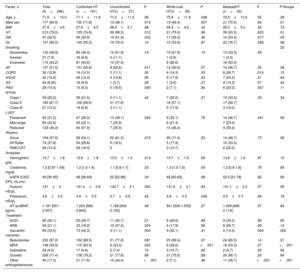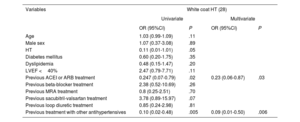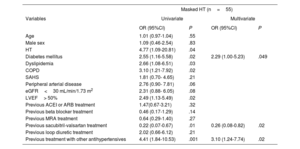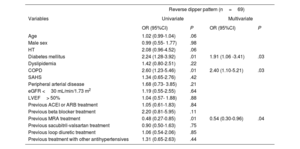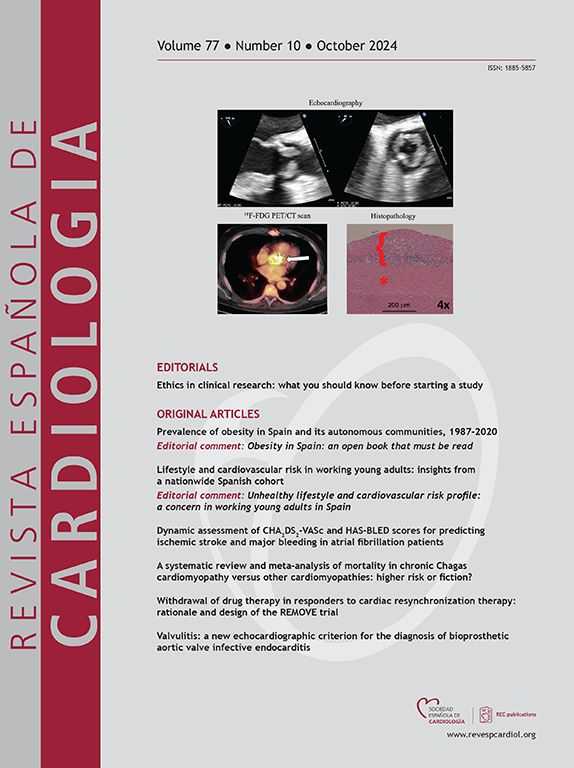
Hypertension is highly common in heart failure (HF). However, there is limited information on its prevalence, circadian variation, and relationship with the various HF phenotypes. The objective of this study was to describe the prevalence of hypertension and its patterns in HF.
MethodsThis was a cross-sectional observational study of patients with optimized stable chronic HF. The patients underwent blood pressure (BP) measurement in the office and 24-hour ambulatory monitoring. We estimated the prevalence of hypertension, and its diurnal (controlled, uncontrolled, white coat, and masked) and nocturnal (dipper, nondipper, and reverse dipper) patterns. We also analyzed the factors associated with the different patterns and HF phenotypes.
ResultsFrom 2017 to 2021, 266 patients were included in the study (mean age, 72±12 years, 67% male, 46% with reduced ejection fraction). Hypertension was present in 83%: controlled in 68%, uncontrolled in 10%, white coat in 10%, and masked in 11%. Among patients with high office BP, 51% had white coat hypertension. Among those with normal office BP, 14% had masked hypertension. The prevalence of dipper, nondipper, and reverse dipper patterns was 31%, 43%, and 26%, respectively. Systolic BP was lower in HF with reduced ejection fraction than in HF with preserved ejection fraction (P <.001).
ConclusionsAmbulatory BP monitoring in HF identified white coat hypertension in more than half of patients with high office BP and masked hypertension in a relevant percentage of patients. The distribution of daytime patterns was similar to that of the population without HF in the literature, but most of the study patients had a pathological nocturnal pattern.
Keywords
Identify yourself
Not yet a subscriber to the journal?
Purchase access to the article
By purchasing the article, the PDF of the same can be downloaded
Price: 19,34 €
Phone for incidents
Monday to Friday from 9am to 6pm (GMT+1) except for the months of July and August, which will be from 9am to 3pm





